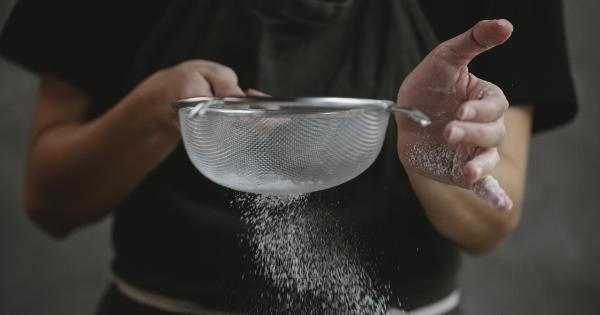Earwax, also known as cerumen, is a natural substance produced by glands in the ear canal. It plays a crucial role in protecting the ear by trapping dust, dirt, and other foreign particles, preventing them from entering the deeper parts of the ear.
However, excessive buildup of earwax can lead to discomfort, hearing problems, and even infections. It’s important to remove earwax safely and effectively. In this article, we will explore some safe methods for earwax removal.
1. Use warm water
A simple and safe method to remove excess earwax is by using warm water. Here’s how to do it:.
Step 1: Tilt your head to one side so that the affected ear is facing upwards.
Step 2: Gently pour warm water into the ear using a clean dropper or syringe. Make sure the water is not too hot to avoid burns.
Step 3: Allow the water to sit in the ear for a few minutes. This will help soften the earwax.
Step 4: Tilt your head in the opposite direction to let the water and loosened earwax drain out. You can use a clean cloth to catch any water or wax that comes out.
2. Olive oil
Olive oil is a safe and effective natural remedy for earwax removal. Its lubricating properties help soften the wax, making it easier to remove. Follow these steps:.
Step 1: Warm some olive oil to body temperature. You can do this by placing a few drops in a small container and immersing it in warm water for a few minutes.
Step 2: Tilt your head to the side and using a clean dropper, gently pour a few drops of warm olive oil into the ear.
Step 3: Keep your head tilted for 5-10 minutes to allow the oil to penetrate and soften the wax.
Step 4: Tilt your head in the opposite direction to let the oil and earwax drain out. Wipe away any excess oil with a clean cloth.
3. Hydrogen peroxide
Hydrogen peroxide is another safe and commonly used method for earwax removal. It has effervescent properties that help to break down the wax. Follow these steps:.
Step 1: Dilute hydrogen peroxide with an equal amount of water to reduce its concentration. Use a 3% hydrogen peroxide solution.
Step 2: Tilt your head to the side and use a clean dropper to pour a few drops of the diluted hydrogen peroxide into the ear.
Step 3: Allow the peroxide to sit in your ear for a few minutes. You may hear a bubbling or crackling sound, which indicates that the peroxide is working to break down the wax.
Step 4: Tilt your head in the opposite direction to let the solution drain out along with the softening wax. Gently clean any excess solution with a cloth.
4. Over-the-counter ear drops
If home remedies are not effective, you can consider using over-the-counter ear drops specifically designed for earwax removal. These drops contain active ingredients that help soften and break down the wax.
Always follow the instructions provided with the product and consult a healthcare professional if needed.
5. Ear irrigation
Ear irrigation, also known as ear syringing, is a method commonly used by healthcare professionals for earwax removal. It involves using a syringe to flush warm water into the ear canal and dislodge the wax.
While this method is generally safe and effective, it’s best to have it done by a professional to avoid any potential complications.
6. Do not use cotton swabs or objects
It’s important to note that using cotton swabs or any other objects like bobby pins or matchsticks to clean your ears is not safe.
These objects can push the earwax deeper into the ear canal, leading to blockages, injuries, and even damage to the eardrum. Stick to the safe methods mentioned above to remove earwax.
7. When to seek medical attention
If you experience severe pain, sudden hearing loss, drainage from the ear, or persistent symptoms after attempting earwax removal at home, it is advisable to seek medical attention.
A healthcare professional can examine your ear and safely remove the wax using specialized tools if necessary.
8. Prevention is key
Preventing excessive earwax buildup can help reduce the need for frequent removal. Here are some tips to prevent earwax accumulation:.
- Do not insert anything into your ear canal, including cotton swabs or other objects.
- Avoid using earphones or headphones at high volumes for extended periods.
- Keep your ears dry and clean. After swimming or showering, gently dry your ears with a towel.
- If you have a history of excessive earwax buildup, consider using over-the-counter wax-softening drops once a week.
- Regularly clean hearing aids or other ear devices according to the manufacturer’s instructions.
- If you wear earplugs, make sure they fit properly and do not push wax deeper into the ear canal.
9. Conclusion
Removing earwax safely is important to maintain good ear health and prevent complications.
By using methods such as warm water, olive oil, hydrogen peroxide, over-the-counter ear drops, or seeking professional help, you can effectively remove excess earwax without harming your ears. Remember to avoid using cotton swabs or any other objects in your ears, as they can cause more harm than good. Practice prevention and take care of your ears to keep them clean and healthy.





























